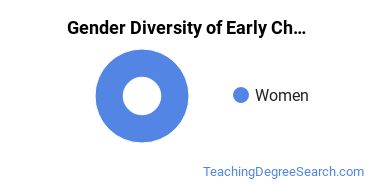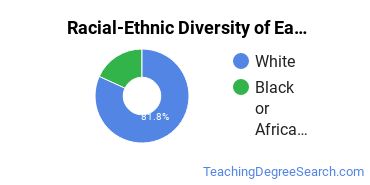Early Childhood Education at Catawba Valley Community College
CVCC is located in Hickory, North Carolina and approximately 4,328 students attend the school each year.
Want to know more about the career opportunities in this field? Check out the Careers in Early Childhood Education section at the bottom of this page.
CVCC Early Childhood Education Degrees Available
- Basic Certificate in Child development (Less Than 1 Year)
- Undergrad Certificate in Child development (1 - 4 Years)
- Associate’s Degree in Child development
CVCC Early Childhood Education Rankings
Child development Student Demographics at CVCC
Take a look at the following statistics related to the make-up of the child development majors at Catawba Valley Community College.
CVCC Early Childhood Education Associate’s Program

The majority of those who receive an associate's degree in child development at CVCC are white. Around 63% fell into this category, which is below average for this degree.
The following table and chart show the race/ethnicity for students who recently graduated from Catawba Valley Community College with a associate's in child development.

| Race/Ethnicity | Number of Students |
|---|---|
| Asian | 0 |
| Black or African American | 1 |
| Hispanic or Latino | 2 |
| White | 5 |
| International Students | 0 |
| Other Races/Ethnicities | 0 |
Related Majors
Careers That Child development Grads May Go Into
A degree in child development can lead to the following careers. Since job numbers and average salaries can vary by geographic location, we have only included the numbers for NC, the home state for Catawba Valley Community College.
| Occupation | Jobs in NC | Average Salary in NC |
|---|---|---|
| Preschool Teachers | 16,110 | $28,260 |
| Kindergarten Teachers | 3,320 | $46,490 |
References
*The racial-ethnic minorities count is calculated by taking the total number of students and subtracting white students, international students, and students whose race/ethnicity was unknown. This number is then divided by the total number of students at the school to obtain the racial-ethnic minorities percentage.
More about our data sources and methodologies.
